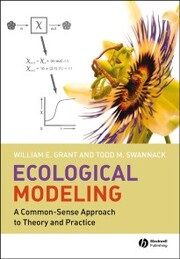Detailansicht
Ecological Modeling
eBook - A Common-Sense Approach to Theory and Practice
ISBN/EAN: 9781444308877
Umbreit-Nr.: 3658917
Sprache:
Englisch
Umfang: 176 S., 2.08 MB
Format in cm:
Einband:
Keine Angabe
Erschienen am 12.03.2009
Auflage: 1/2009
E-Book
Format: PDF
DRM: Adobe DRM
- Zusatztext
- <i>Ecological Modeling:A Commonsense Approach to Theory and Practice</i> explores how simulation modeling and its new ecological applications can offer solutions to complex natural resource management problems. This is a practical guide for students, teachers, and professional ecologists.<ul><li>Examines four phases of the modeling process: conceptual model formulation, quantitative model specification, model evaluation, and model use</li><li>Provides useful building blocks for constructing systems simulation models</li><li>Includes a format for reporting the development and use of simulation models</li><li>Offers an integrated systems perspective for students, faculty, and professionals</li><li>Features helpful insights from the author, gained over 30 years of university teaching</li></ul><p>"I can strongly recommend the book as textbook for all courses in population dynamic modeling particularly when the course is planned for the second or third year of a bachelor study in ecology, environmental science or ecological engineering. It uncovers very clearly for the readers the scientific idea and thinking behind modeling and all the necessary steps in the development of models."<br /><i><b>Ecological Modeling Journal, 2009</b></i></p>
- Autorenportrait
- <b>Bill Grant</b> has taught ecological modeling in the Department of Wildlife and Fisheries Sciences (WFSC) at Texas A&M University since 1976, has served on the Board of Governors and as President of the International Society for Ecological Modeling, and has been Associate Editor of the international journal<i>Ecological Modelling</i> since 1997.<p><b>Todd Swannack</b> also has taught ecological modeling in WFSC at Texas A&M University, and has been modeling the population dynamics of endangered species since 2002.</p>
